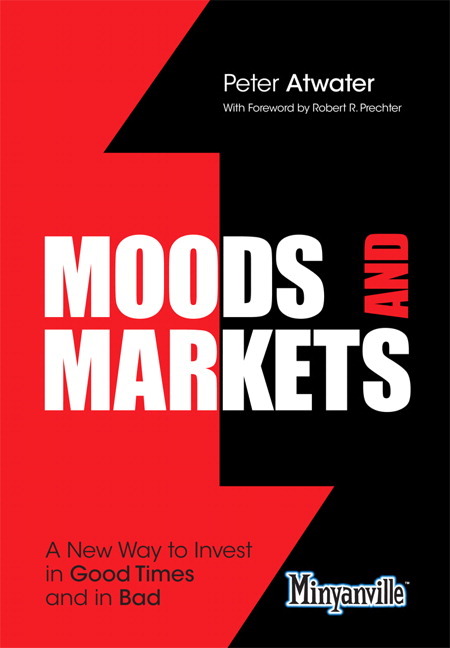Book Review: The Crisis of Crowding

I am going to say something that I rarely say: I am grateful that this book was written.? Why am I grateful?
- It highlights the idea that people, even really bright people, do not behave rationally, but imitatively — they follow recent price action — they mimic.
- It validates the concept of a “crowded trade,” one that offered high returns in the past, may presently offer low returns to a “buy and hold” investor, but will deliver negative returns in the near future, because the holders of the trade are relying on the trade to deliver positive returns in the short run, and will bail if it doesn’t happen.
- It points up the nonlinearity of markets, and invalidates the efficient markets hypothesis; it validates the concept of the boom-bust cycle both in micro and macro.
- It teaches us to not take on too much debt, even if we are really, really smart.? We aren’t as smart as we think we are.
- In short, it sums up a lot of my philosophy at The Aleph Blog.? Real risk control thinks long term, and considers what will happen if liquidity dries up.? Real risk control knows that large positions in any asset relative to the market must be regarded to be “Buy-and-hold” regardless of what your trading intentions are.? False risk control assumes that markets always function, and that your relative size versus the market does not matter.
The author of the book has led a storied life.? He was a quantitative analyst hired to work in risk control for Long Term Capital Management [LTCM] near its inception, and continued with them through the failure.? After that, he worked for Rydex, built FOLIOfn, and worked for the Bank of International Settlements, and Schroders.? He now works as a professor of finance at the University of San Francisco, after having gotten a PhD from MIT.? He knows the markets both practically and experientially, like me, though he is better than me.
LTCM is a great example of what happens when some really smart guys find clever ways to make money in the markets, and then overplay them.? The trade that has a buy-and-hold yield of 10% is genius.? When it is 8% it is bright.? At 6% it is average, why are you playing?? At 4% it is dopey.? But what happens when your trade gets big relative to the market?? The rules change, much like JP Morgan recently.? When you are big enough that you are moving the market as a normal practice, that indicates danger.? You have become the market, and are distorting it.? It will eventually come back to bite you, as JP Morgan recently learned.
The failure of LTCM may have been the template, but the author goes on to explain other disequilibrium situations such as:
- The quantitative equity panic of August 2007
- The failure of Bear Stearns.
- The failures of Fannie and Freddie (free money brings out the worst in all of us)
- The failure of Lehman Brothers.
- The failure of the banking system both in the US & Europe
- The failure of LTCM progeny in 2008 (no, we don’t learn)
- The Flash Crash
- The failure of the Eurozone, so far. (It is performance art.? How can we create the biggest failure ever?? We will eclipse the Great Depression! Oui! Ya!)
I’ve written about most of these, and I can tell you the author does a good good job.? Aside from that, he took time to interview primary sources as to their own view of the events that happened, particularly at LTCM and its progeny, and it adds to what we know about the crises that he wrote about.
People need to understand that crises are a normal aspect of markets.? Until you understand that crises are normal, you will always take too much risk.
This is an excellent book; buy it and avoid losses.
Quibbles
In the beginning he got the name of Cramer’s firm wrong.
I would have eliminated the appendices if I were the editor, the audience that can benefit from the math is too narrow to be worth printing it in the book.? Better you should put a PDF out on the web, and put out a slimmer book.
Who would benefit from this book: If you want to understand why crises happen, buy this book.? It is well-written but requires some degree of market knowledge for the reader to benefit.? It is not for beginners.?? If you want to, you can buy it here: The Crisis of Crowding: Quant Copycats, Ugly Models, and the New Crash Normal (Bloomberg).
Full disclosure: The PR flack asked me if I would like the book and I assented.
If you enter Amazon through my site, and you buy anything, I get a small commission.? This is my main source of blog revenue.? I prefer this to a ?tip jar? because I want you to get something you want, rather than merely giving me a tip.? Book reviews take time, particularly with the reading, which most book reviewers don?t do in full, and I typically do. (When I don?t, I mention that I scanned the book.? Also, I never use the data that the PR flacks send out.)
Most people buying at Amazon do not enter via a referring website.? Thus Amazon builds an extra 1-3% into the prices to all buyers to compensate for the commissions given to the minority that come through referring sites.? Whether you buy at Amazon directly or enter via my site, your prices don?t change.




